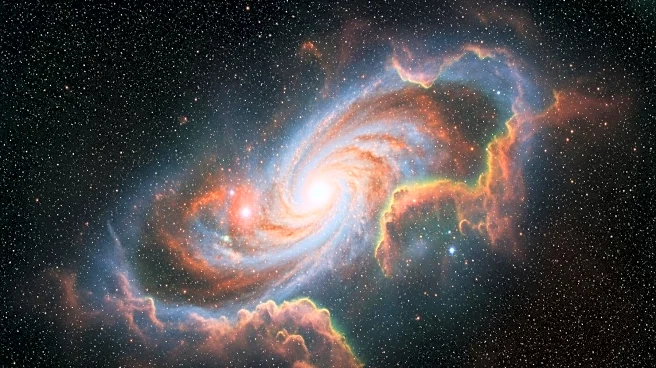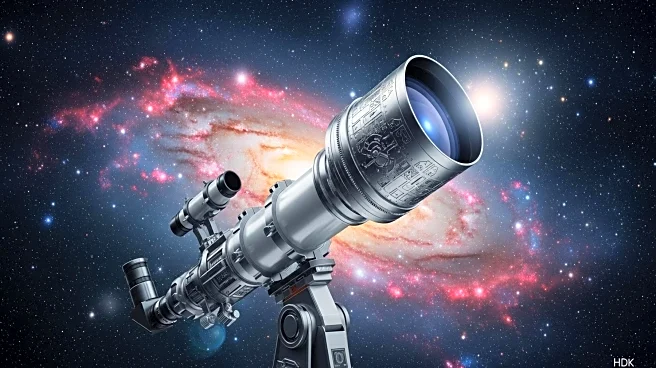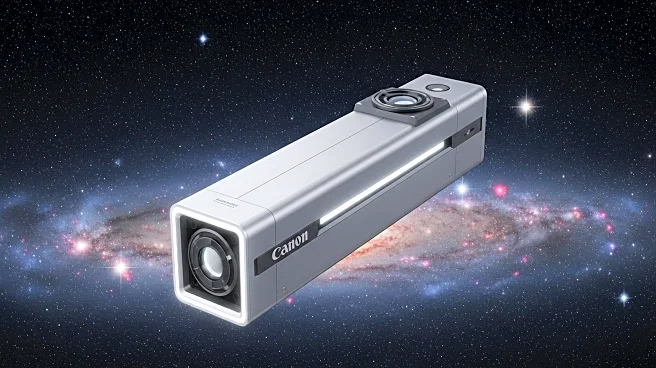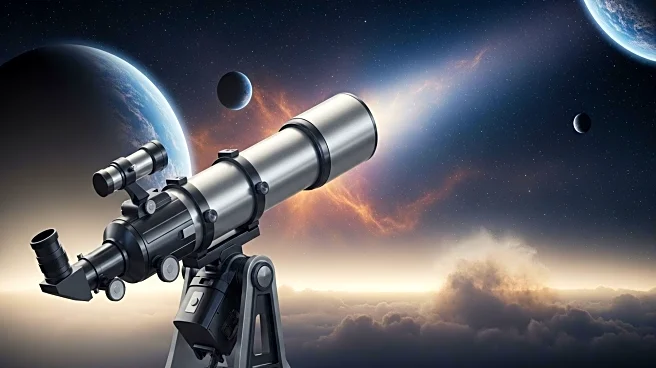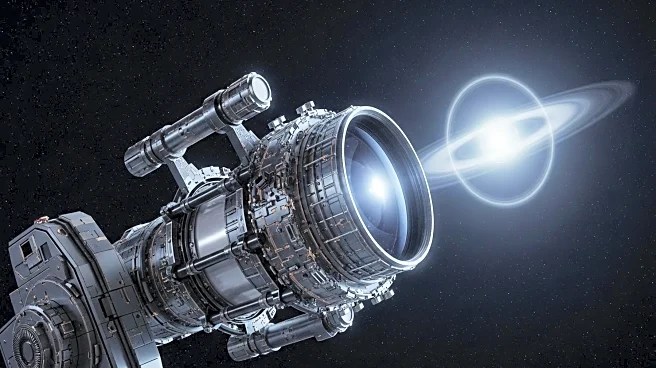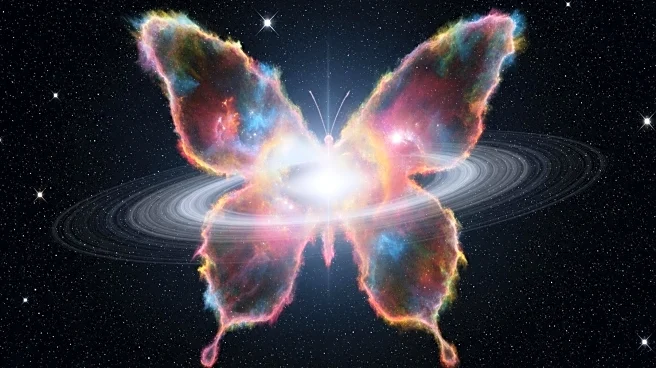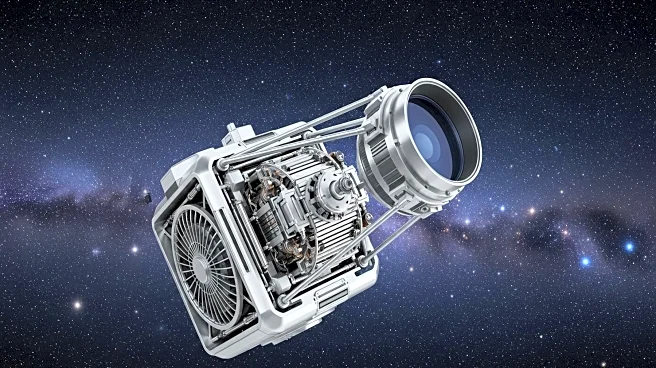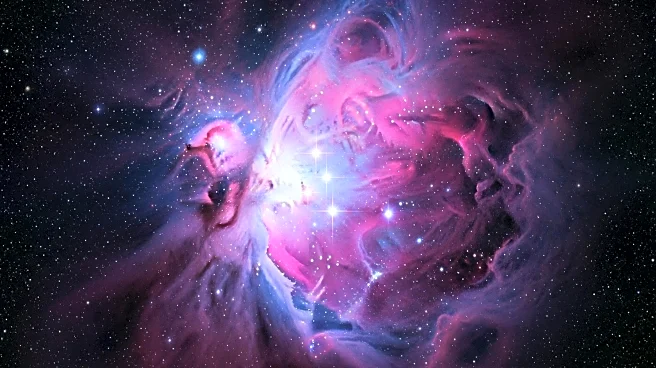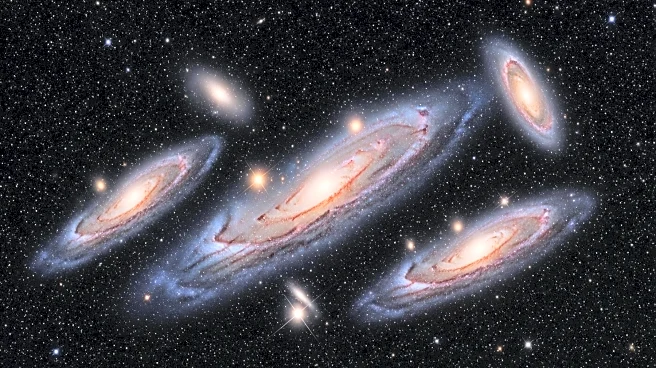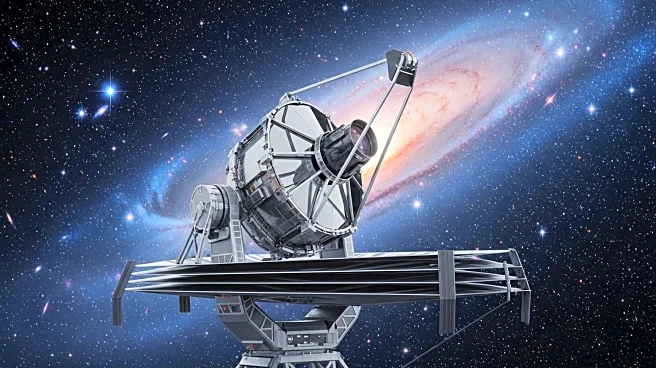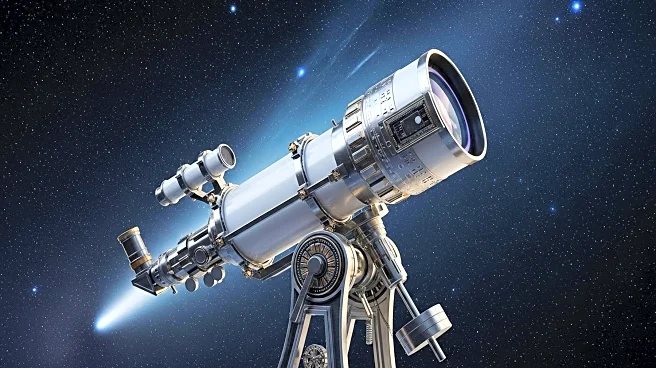What is the story about?
What's Happening?
The James Webb Space Telescope (JWST) has discovered an unusually rich planet-forming disk around a brown dwarf named Cha Hα 1. This young brown dwarf is surrounded by a disk of gas and dust, containing a diverse array of molecules, including hydrocarbons, water, and carbon dioxide. The findings suggest that even brown dwarfs, often referred to as 'failed stars,' can host the raw ingredients for planet formation. The disk's chemical complexity offers insights into the processes that govern the formation of planetary systems around low-mass stars.
Why It's Important?
The discovery of a chemically rich disk around a brown dwarf challenges existing notions about planet formation and the potential for diverse planetary systems. Brown dwarfs, with their cooler and less turbulent environments, provide a unique setting for studying the early stages of planet formation. The presence of both hydrocarbons and oxygen-bearing molecules indicates a complex chemical environment, which could lead to the formation of planets with different compositions than those around sun-like stars. This research enhances our understanding of the diversity of planetary systems and the conditions that lead to planet formation.
AI Generated Content
Do you find this article useful?
